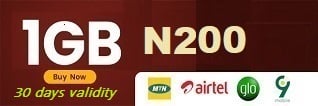The Parallel Exchange Rate And The Premium In Ethiopia
Economics Project Topics
Get the Complete Project Materials Now! »
In response to excess demand for foreign exchange in the official market, parallelrnmarkets for foreign exchange develop . The emergence and existence of active parallelrnforeign exchange market creates several complications to policy makers in their attemptrnto regulate the external balance. That is, variation in the parallel exchange rate and thernpremium affect the level of international reserves.rnEthiopia had high parallel premium for foreign exchange for 1973-1993 period andrnmoderate premium in 1972, 1994 and 1995. As to what determines the movement in thernbehavior of the parallel exchange rate and the premium in Ethiopia is the objective ofrnthis study to investigate.rnAccordingly, stock-flow model is adopted to find out the determinants of thernvariation in the parallel premium while simultaneous equation smuggling model is usedrnto investigate the determinants of the parallel exchange rate in Ethiopia.rnBy employing the above models, the study came out with the result that real officialrnexchange rate, real money balance, import tariff rate, real output and one year laggedrnlevel of the premium are the determinants of the variation in the spread between thernparallel and the official exchange rates in the long-run while its short-run determinantsrnare found to be real official exchange rate, import tariff rate, and one period lagged levelrnof the premium. On the other hand, the movement in the parallel exchange rate is foundrnto be determined by desired imports, trade restrictions and enforcement of exchangerncontrol, and trade and exchange rate policy reforms. Hence, policy makers should takerninto account the found determinants of the parallel exchange rate and the premium so asrnto formulate sound exchange rate policy, i. e., in order to reduce the parallel premium torninsignificant level or to unify the official and the parallel exchange rates of Ethiopia.
Be the First to Share On Social

Enjoying our content?
Don't miss out on new videos! Subscribe to our YouTube channel for more awesome content.
Subscribe Now!













